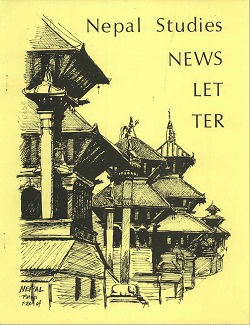Author Biography
Alton C. Byers, Ph.D. is a mountain geographer specializing in applied research, high altitude ecosystems, climate change, and integrated conservation and development programs. He joined The Mountain Institute (TMI) in 1990 as Environmental Advisor, and has since worked as Co-Manager of the Makalu-Barun National Park (Nepal Programs), founder and Director of Andean Programs, Director of Appalachian Programs, and since 2001 as Director of Science and Exploration. Since 2012 he has co-managed the USAID-funded High Mountains Adaptation Partnership project (HiMAP) that is implementing climate change adaptation projects in the Mt. Everest region of Nepal and Cordillera Blanca region of Peru.
Abstract
A reconnaissance of the upper Hinku valley, Makalu-Barun National Park and Buffer Zone, Nepal was undertaken in May, 2007 to determine the impacts of contemporary adventure tourism upon its subalpine and alpine ecosystems. Results showed that visitor numbers, lodges, and other tourist-related infrastructure grew from one structure in 1995 to 129 in 2007. This growth was accompanied by a corresponding and accelerated harvesting of subalpine timber for lodge construction, and of shrub juniper and dwarf rhododendron for use as fuel in alpine tourist lodges. These practices were largely discontinued with the formation of the Mera Alpine Conservation Group (MACG) in 2008, which placed greater restrictions on timber harvesting, mandated the use of kerosene as a fuel substitute for alpine shrubs, and attempted to limit the number of new lodges that could be built in the valley. Repeat sampling of alpine hillslopes suggest that these actions have had significant conservation benefits. However, it is clear that the challenges of promoting high altitude conservation, and of finding renewable, sustainable energy sources alternative to alpine shrubs and kerosene, will remain for the foreseeable future. Strategies that could facilitate beneficial change in current alpine usage practices are discussed in the paper.
Acknowledgements
The author would like to thank the National Geographic Society, American Alpine Club, and The Mountain Institute for their support of this and other projects designed to promote community-based alpine conservation throughout the high mountain world.
Creative Commons License

This work is licensed under a Creative Commons Attribution 4.0 License.
Recommended Citation
Byers, Alton. 2014. Contemporary Human Impacts on Subalpine and Alpine Ecosystems of the Hinku Valley, Makalu-Barun National Park and Buffer Zone, Nepal. HIMALAYA 33(1).
Available at:
https://digitalcommons.macalester.edu/himalaya/vol33/iss1/8


